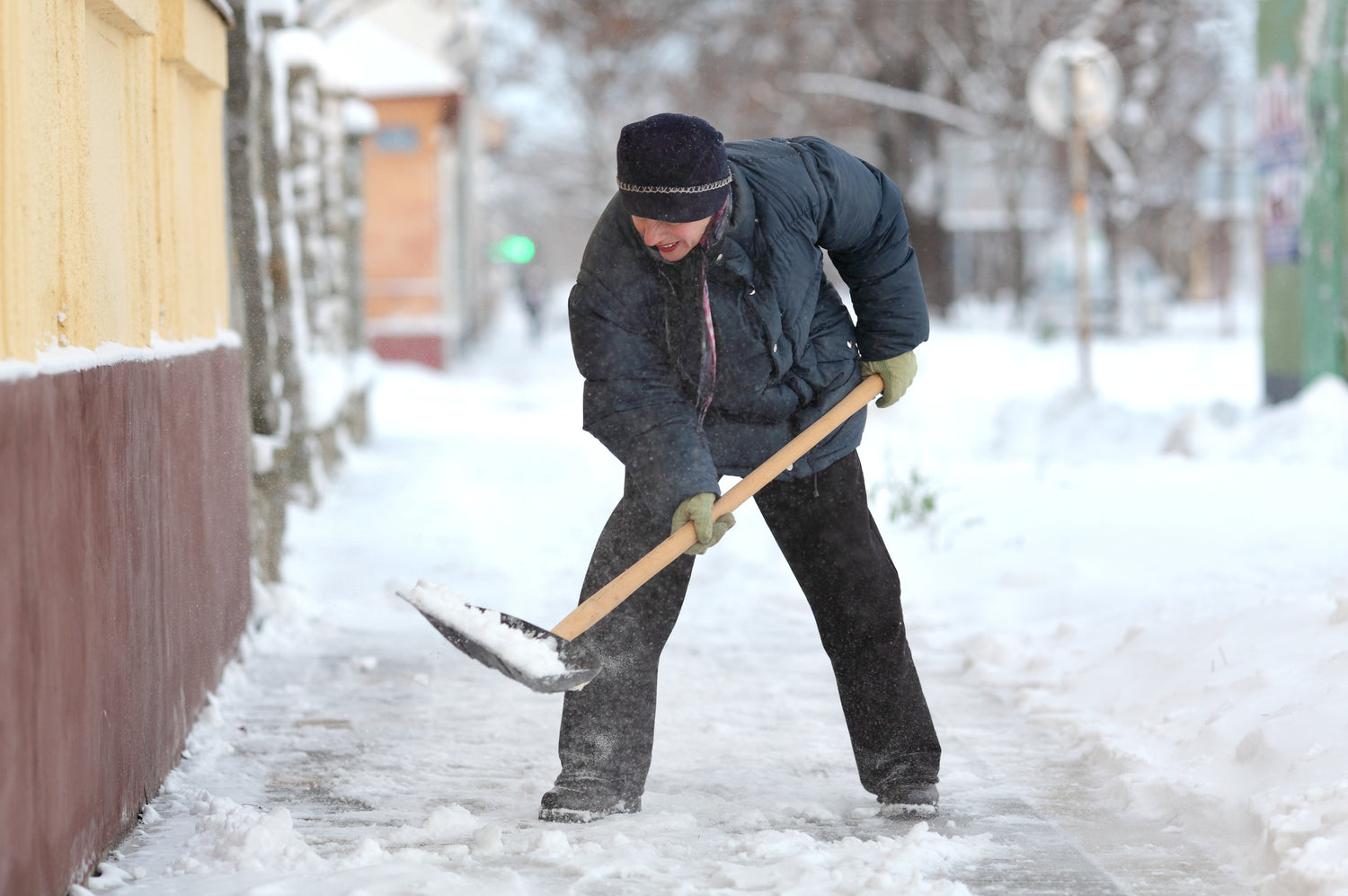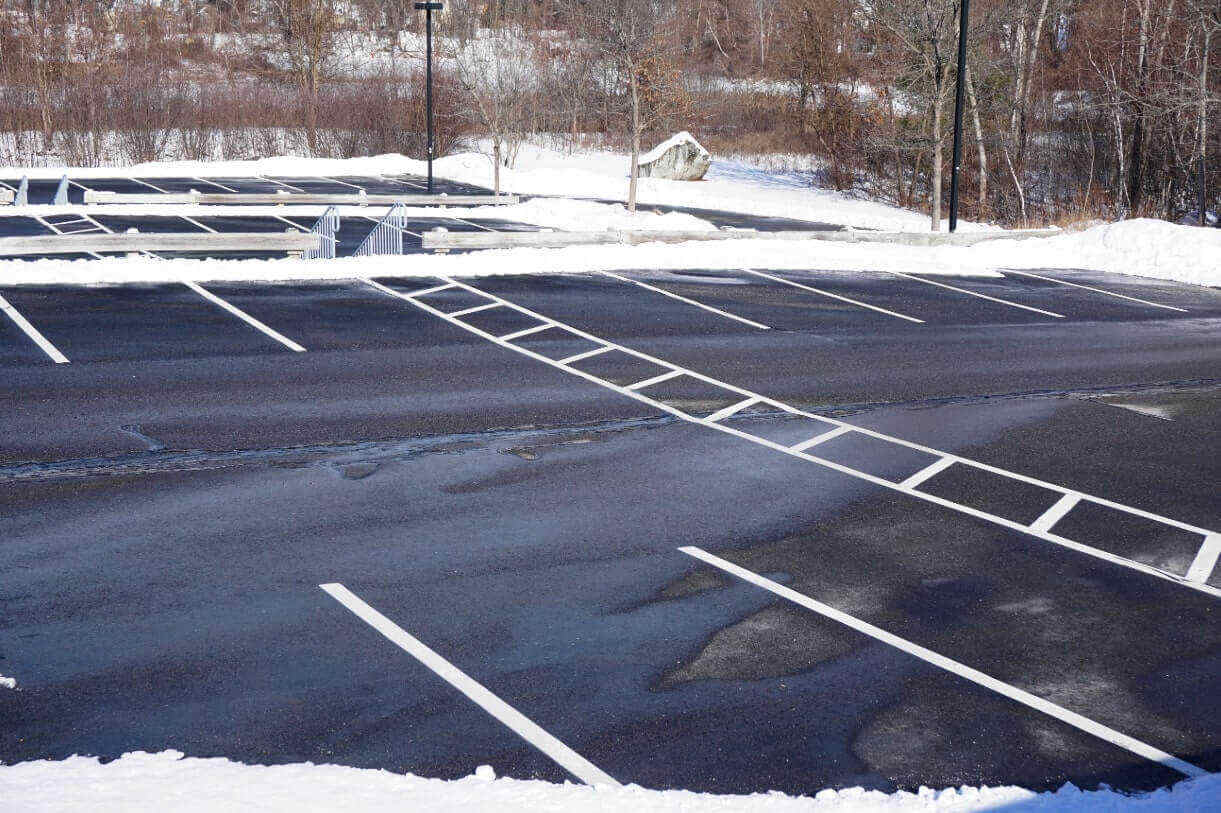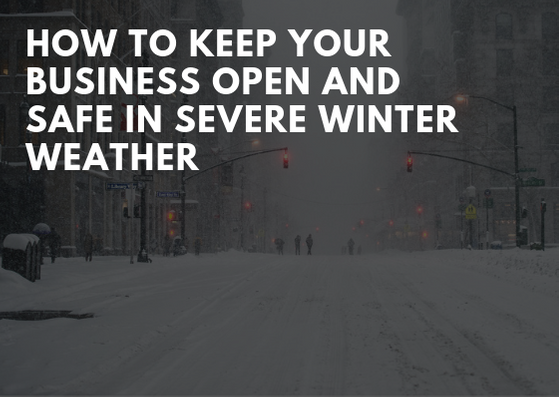
Severe winter storms not only disrupt business, they also can put your employees and visitors to your building at risk for injury. The best way to limit potential harm caused by blizzard conditions is to make sure you have a plan in place to minimize risk. Here are the essential actions you should take before a storm approaches.
#1 Winterize your building
If temperatures dip too low, your HVAC and pipe systems become particularly vulnerable. Loss of heat and burst pipes will bring business to a halt and could cause extensive property damage. Year-round maintenance of these systems is essential, so before a storm hits, take steps to ensure these systems are prepared.
You should also make sure any gutters and downspouts are clear of residual autumn leaves and other debris. This ensures that water drains properly, keeping ice from building up. To prevent heat loss and keep electric bills manageable, make sure to seal any air leaks around windows and doors.
#2 Ensure that company vehicles are prepared
Mandatory deliveries and transportation of goods often must continue in bad weather, so it’s important to make sure that all company vehicles are up to the task of operating in harsh conditions.
Before the bad weather hits, check that antifreeze, exhaust, brake, battery, and ignition systems are in good working order. Low temperatures will cause heavy oils to congeal, so check with your mechanic to make sure you use the proper oil to maintain adequate lubrication. And it goes without saying to equip your vehicles with optimum winter tires.
The Department of Homeland Security provides tips for ensuring your vehicles are ready for winter. Consult the "Before Snowstorms and Extreme Cold” drop-down tab on the DHS website for a complete list.
#3 Educate employees on preparedness and business continuity
Employees may not be aware of steps they should take in advance of winter storms to protect their homes. Pointing them to specific resources where they can learn basic preparedness will cut down on unnecessary absenteeism caused by last-minute home preparations.
Depending upon your particular enterprise and the severity of a storm, it may be wise to tell non-essential employees to stay off-site if a storm is heading your way. For those whose absence may cause a significant disruption in work-flow, consider the use of company-issued laptops so employees can work from home if their electricity remains running. The Insurance Institute for Business & Home Safety (IBHS) provides helpful guidelines for business continuity and strategies for keeping things intact during and after a weather-related interruption.
#4 Understand the meaning of storm alerts
The National Weather Service issues alerts advising the public of incoming bad weather. It’s a good idea to be aware of the different types alerts that may be issued during a storm so as not to over- or under-prepare.
The Red Cross uses the following definitions:
- Winter Storm Outlook: Storm conditions may occur in the next 2-5 days
- Winter Weather Advisory: Significant inconveniences are expected with possible hazardous conditions
- Winter Storm Watch: Storm conditions are possible within 36-48 hours
- Winter Storm Warning: Life-threatening and severe conditions have begun
One way to keep abreast of these changing conditions is to designate an employee to monitor weather alerts and notify the correct personnel so that management is prepared to take necessary steps at the right time.
#5 Ensure the safety of employees working outside
Part of winter facility maintenance includes outside tasks that can put employees at risk for injury. Clearing snow and ice off roofs should be done with the utmost care, preferably from a ladder and utilizing proper fall safety equipment.
It’s also essential that employees are properly clothed for spending hours outside in harsh weather. Try to rotate employees in and out of tasks in frigid weather conditions, and make sure to watch for signs of hypothermia in outside workers.
#6 Make sure walkways are safe
With preparedness and luck, your facility will be able to remain open during a severe storm. If not, when the worst is over, you’ll want to be able to get back to business as soon as possible. To make it safe for employees and visitors to enter your facility, make sure that your parking lot is sufficiently cleared of snow and ice. An important factor to consider when contracting with a snow removal company is how quickly it can attend to your lot after a storm.
In addition, take steps to protect pedestrians from snowy and icy conditions on your walkways. However, shoveling snow is time consuming and relying on shoveling alone may not be enough. Salts, anti- and de-icers, and snow-melting mats are alternative and supplemental options.
Don’t let the winter storm season take you by surprise. Ensure your facility is prepared for every winter scenario by planning ahead, focusing on safety, and staying alert!


